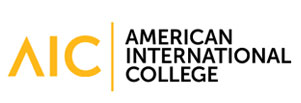
Study in Bangladesh
Why pursue medical study in Bangladesh?
Popular courses among Nepalese students: MBBS / BDS, MPH, Pharmacy & Engineering
The international reputation of Bangladesh medical education is ever-growing as Bangladeshi medical graduates are performing very well in their respective fields in various countries. Most of the medical colleges are enlisted by the International Medical Education Directory (FAIMER) and recognized by WHO (World Directory of Medical Schools). Furthermore, the medical graduates from some of the reputed medical colleges are eligible for registration with the General Medicine Council of United Kingdom and United States Medical License Examinations (USMLE).
Advantages of studying medicine in Bangladesh:“BE A DOCTOR WITH PRIDE”
1. The government of Bangladesh has allocated around 30% seats in MBBS and BDS at each of the medical colleges for foreign students.
2. Students will get very good practical exposure at renowned colleges.
3. The tuition fees can be paid in installments. So, you don’t need to worry about spending huge sum money at one go.
4. The culture, food habits, and language are not very different from that of Nepal.
5. People in Bangladesh are very welcoming and friendly.
6. The cost of living is not so expensive, which is why life in Bangladesh is pocket-friendly!
7. If you are highly talented then the Bangladesh government welcomes you to study medicine free-of-cost, i.e. under Scholarship quota. SAARC students pay no tuition fees.
8. Students can be assisted to get a partial fee waivers from some of the privately funded medical colleges!
MBBS Course Duration: 5 +1=6 years Eligibility criteria as per DGHS:
1.Must have passed qualifying examinations (HSC/ ‘A’ level) or equivalent examination.
2.SSC/ ‘O’ or equivalent examination passed not more than 1 year before joining HSC.
3.HSC/ ‘A’ or equivalent examination passed not more than 1year before the application process.
4.Minimum aggregate GPA in SSC or equivalent and HSC or equivalent: 8.00 (eight) for government college and 7.0 for private colleges
5.Minimum GPA either in SSC or equivalent or in HSC or equivalent: 3.5
6.Minimum GPA in biology: 3.5
7. For calculation of GPA against the marks obtained in SSC/ ‘O’ level or equivalent exam, only the top 5 subjects are considered for calculation of GPA. Therefore, GPA in ‘O’ level = (total marks obtained in the top five subjects)/5
8. For calculation of GPA against the marks obtained in HSC/ ‘A’ level or equivalent exam, only 3 subjects (Physics, Chemistry, and Biology) are considered for calculation of GPA.
9. Qualifying Grade in each subject individually is ‘C’. Therefore, GPA in ‘A’ level = (total marks obtained in three subjects)/3
Universities Overview in India: State-wise Location of Universities
The higher education system in India includes both Private and Public University. The Government of India and the state governments support public universities, while various bodies and societies mostly support private universities. Universities in India are recognized by the University Grants Commission (UGC), which draws its power from the University Grants Commission Act, 1956. In addition, 16 Professional Councils are established, controlling different aspects of accreditation and coordination. All recognized universities are members of the Association of Indian Universities (AIU), which is integral to the dissemination of information and serves as an advisor to the government, UGC, and the institutions themselves as well.
The types of universities include:
- Central Universities or Union universities are established by Act of Parliament and are under the purview of the Department of Higher Education in the Union Human Resource Development Ministry. As of 01.06.2020, the UGC lists 54 central universities.
- State universities are run by the state government of each of the states and territories of India and are usually established by a local legislative assembly act. As of 01.06.2020, the UGC lists 412 state universities. The oldest establishment date listed by the UGC is 1857, shared by the University of Mumbai, the University of Madras, and the University of Calcutta.
- Deemed university or “Deemed-to-be-University”, is a status of autonomy granted by the Department of Higher Education on the advice of the UGC, under Section 3 of the UGC Act. The UGC list from 12 February 2020 lists 127 deemed universities. According to this list, the first institute to be granted deemed university status was the Indian Institute of Science, which was granted this status on 12 May 1958. Note that in many cases, the same listing by the UGC covers several institutes. For example, the listing for Homi Bhabha National Institute covers the Institute of Mathematical Sciences, the Indira Gandhi Centre for Atomic Research and other institutes.
- State Private Universities are approved by the UGC. They can grant degrees but they are not allowed to have off-campus affiliated colleges. The UGC list of private universities from 01.06.2020 lists 356 private universities.
Apart from the above universities, other institutions are granted permission to autonomously award degrees. However, they do not affiliate colleges and are not officially called “universities” but “autonomous organizations” or “autonomous institutes”. They fall under the administrative control of the Department of Higher Education. These organizations include the Indian Institutes of Technology, the National Institutes of technology, the Indian Institutes of Science Education and Research, the Indian Institutes of Management and other autonomous institutes which are known as Institutes of National Importance. These institutes are not listed below. Also not listed are institutes, which are under the control of the professional councils, without the approval of the UGC, e.g. Agricultural Universities, which are under the control of the Agricultural Education Division of the Indian Council of Agricultural Research (ICAR), one of the professional council.
Most universities are ‘affiliating universities’, which prescribe to the affiliated colleges the admission criteria and courses of study, hold examinations and award degrees.
University departments impart postgraduate education and conduct and promote research in a variety of disciplines.
Undergraduate and, to some extent, postgraduate instruction is imparted by the colleges affiliated to a particular university.
Selection of Course at Higher Education Level
Innumerable options for the courses are available. A student wishing to admit in engineering can have an option to choose the best one among from many alternatives of Marine Engineering, Genetic Engineering, BioMedical Engineering, Ocean Engineering, Automobile Engineering, Aeronautical Engineering, Rubber Engineering, Agricultural Engineering, Petroleum Engineering etc. So it is advisable to visit authorized educational consultants to get accurate, reliable, and unbiased information for the best selection of suitable course. Indian Universities offer various courses under UG and PG level in different disciplines as below.
Engineering and Technology: Computer Sciences, Information Technology, Biotechnology, Bio-informatics/Medical, Ocean engineering, Aeronautical Engineering, Marine Engineering Automobile Engineering, Agricultural Engineering, Rubber Engineering, and many others.
- Medical, Dental, Nursing, Pharmacy, Physiotherapy, and Paramedical.
- Agriculture / Veterinary Sciences, Dairy Technology, and Fisheries.
- Arts & Fine Arts, Humanities, Social Sciences, Commerce, Education, Science, and Management
- Hotel Management & Catering Technology, Travel, and Tourism
- Fashion Design & Technology.
" An Authorized Representative of 350+ Top International Universities Across 10+ Countries Globally With Upto 100% Scholarship "
What Our Student Say






























Professional Accreditation & Memberships









Student's Voice
Voices of students and parents.





















































